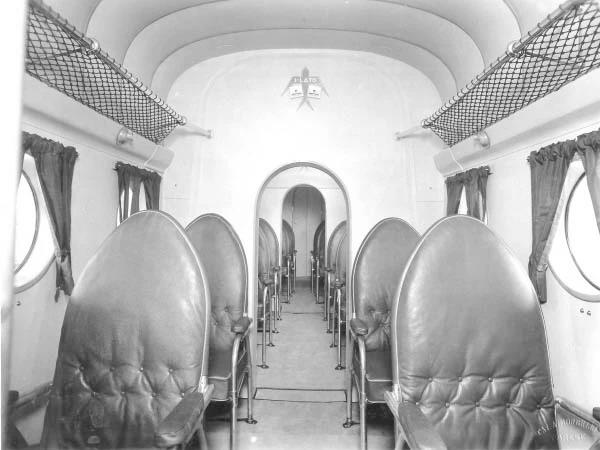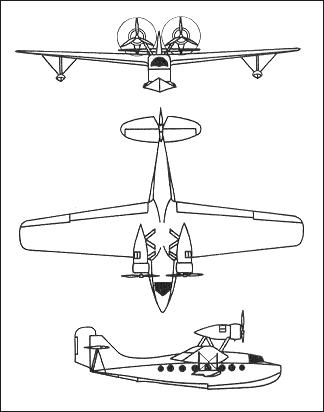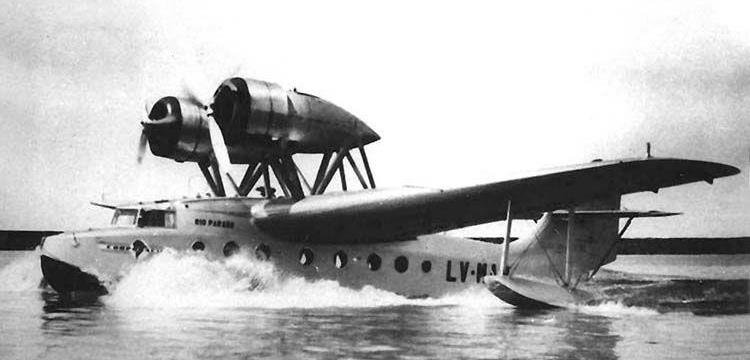| Type |
3-seat plus 12 passengers |
| Engine |
2 Alfa Romeo 126 R.C. 10 |
| Dimensions |
Length 16,167 m (amfibie 15,5 m), height 5,448 m, span 22,924 m (amfibie 22,8 m) , wing area 75,79 m2 , |
| Weights |
Empty 5339 kg (amfibie 5987 kg), loaded 7534 kg ( 8233 kg), max. take off weight |
| Performance |
Max.. speed 291 km/h at 1000 m ( amfibie 282 km/h), cruising speed 245 km/h (amfibie 240 km/h) , range 1387 km (amfibie 902 km) , endurance 5 h 30 min. , service ceiling 6000 m (amfibie 5798 m) , climb 4,18 m/sec. (amfibie 3,55 m/sec., to 2000 m 7 min. 58 sec. to 4000 m 19 min. 30 sec. |
| Type |
Werk.Nr |
Registration |
History |
| M.C. 94 I |
94002 |
I-ARNO, MM60455, D-ADQN |
7.01.1937 Ala Littoria/Trieste |
| M.C. 94 I |
94003 |
I-LIRI, MM60456, D-ADQO |
31.07.1936 Ala Littoria/Trieste |
| M.C. 94 I |
94004 |
I-TOCE, MM60452, D-ADQP |
11.08.1936 Ala Littoria/Trieste |
| M.C. 94 I |
94005 |
I-SILE, MM60457, D-ADQQ |
03.09.1936Ala Littoria/Trieste |
| M.C. 94 I |
94006 |
I-NARO, MM60453, D-ADQR |
19.12.1936 Ala Littoria/Trieste |
| M.C. 94 II |
94007 |
I-ENZA, MM60459, D-ADQS |
10.05.1938 Ala Littoria/Trieste |
| M.C. 94 II |
94009 |
I-NETO, MM60458, D-ADQT |
14.06-1938Ala Littoria/Trieste |
The M.C.94 was designed by Mario Castoldi as a commercial passenger transport flying boat to replace the Ala Littoria airline's elderly CANT 10s. Constructed mainly of wood, it was a high-wing cantilever monoplane with a two-step hull and single fin and rudder. The prototype, which was an amphibian with a retractable wheeled undercarriage which swung forward into streamlined casings in the leading edges of the wings, was powered by two 574 kilowatts (770 hp) Wright SGR-1820-F Cyclone nine-cylinder air-cooled radial engines mounted above the wing, each driving a tractor propeller. It was followed by 11 production aircraft, which were all pure flying boats. From the seventh aircraft, 570 kilowatts (760 hp) Alfa Romeo 126 R.C.10 radial engines were fitted. The three-man crew was accommodated in a raised and enclosed cockpit and the main cabin could accommodate 12 passengers.
Ala Littoria purchased the prototype and first five production aircraft in 1936. The Regia Aeronautica (Italian Royal Air Force) declined purchase of the final six production aircraft, which Ala Littoria then also bought.
The M.C.94 entered service with Ala Littoria in 1936 on Adriatic routes, and a number were still in service during World War II. In 1939, Ala Italia sold three of its M.C.94s to its Argentinian partner, Corporación Sudamericana de Servicios Aéreos.
The prototype set a number of international world records for flying boats in 1937, including a new altitude record of 6,432 metres carrying a payload of 1,000 kilograms , a speed record of 248.967 kilometres per hour over a 2,000 kilometres closed circuit, and a speed record of 257.138 kilometres per hour carrying a 1,000 kilograms payload over a 1,000 kilometres closed circuit.









